Tuai Tree
- November 5, 2024
- 0 comment
The Tuai Tree, scientifically known as Bischofia javanica, is a remarkable tree species valued for its ecological benefits and adaptability in diverse ecosystems. This tree contributes significantly to forest biodiversity and plays an essential role in soil health, erosion control, and providing shelter to wildlife.

As part of its botanical classification, the Tuai Tree belongs to the Phyllanthaceae family and is noted for its resilience and value in both natural ecosystems and cultivated landscapes.
What Is a Tuai Tree?
The Tuai Tree, or Bischofia javanica, is a large, deciduous tree native to tropical regions of Asia and the Pacific. Known for its rapid growth, the Tuai Tree can reach heights of up to 30 meters (about 98 feet) under optimal conditions. Its leaves are compound with a lush green color, typically arranged alternately along the stems. The tree’s bark is brownish-gray and textured, which helps it retain moisture, making it ideal for tropical and subtropical environments. Tuai flowers are small and inconspicuous, but they play a crucial role in pollination.
| Specification | Details |
|---|---|
| Scientific Name | Bischofia javanica |
| Common Names | Tuai Tree, Bishop Wood |
| Family | Phyllanthaceae |
| Native Range | Asia, Pacific Islands |
| Tree Height | 15 to 30 meters |
| Bark | Brownish-gray, textured |
| Leaves | Compound, green, glossy |
| Flowers | Small, greenish, attracts pollinators |
| Fruit | Small, round, favored by birds |
| Seed Dispersal | By animals and birds |
| Preferred Climate | Tropical and subtropical |
| Soil Type | Moist, well-draining soils |
| Ecological Role | Soil stabilization, supports biodiversity |
| Traditional Uses | Medicinal, wood for construction |
| Conservation Status | Not endangered |
| Flowering Period | Warmer months |
| Root System | Deep, supports drought resilience |
One of the fascinating characteristics of the Tuai Tree is its ability to improve soil quality. Its roots help enrich the soil with nutrients, which makes it a valuable tree for degraded lands. In traditional practices, the Tuai Tree is also known to have medicinal properties, and its wood is sometimes used for construction and furniture due to its durability.
Different Types of Tuai Tree Species
While the Bischofia javanica is the primary species commonly referred to as the Tuai Tree, this species may vary slightly in size and appearance based on its geographical distribution. Generally, Tuai Trees are found in two main varieties based on growth patterns and size:
Lowland Tuai Trees
Found in tropical lowland forests, these trees typically grow taller with a broad canopy, providing extensive shade and soil cover. This variation thrives in warmer, wetter climates.


Highland Tuai Trees
Adapted to higher altitudes, these trees are generally shorter and more robust, suited to cooler climates and often found in subtropical or mountainous regions.
Coastal Tuai Trees
In some coastal regions, Tuai Trees adapt to slightly saline soils, where they develop a more compact form to withstand wind and salt exposure.

These varieties contribute to the ecosystem by providing habitat for numerous insects and birds, supporting biodiversity, and contributing to natural reforestation in deforested areas.
Where Do Tuai Trees Grow?
The Tuai Tree is naturally found in tropical and subtropical regions across Asia, particularly in countries like India, Indonesia, and the Philippines. It also grows in some Pacific islands, favoring areas with ample sunlight and moderate rainfall. Tuai Trees are well-suited to various soil types but thrive best in moist, well-draining soils. This tree’s resilience in tropical climates makes it a strong contributor to soil stabilization, especially in areas susceptible to erosion.
In their native environments, Tuai Trees are crucial for soil stabilization and preventing landslides. They are commonly found in both primary and secondary forests, where they provide shade and shelter to understory plants and wildlife, creating a healthy and balanced ecosystem.
How to Grow and Care for Tuai Trees
For gardeners interested in growing Tuai Trees, they can be an excellent choice for large gardens due to their tall and spreading structure. Here’s how to cultivate and care for them:

- Soil: Plant Tuai Trees in rich, well-draining soil to allow proper root growth. Sandy or loamy soils are ideal for these trees.
- Water: These trees require moderate watering, especially in their early years. Once established, they can tolerate drier conditions.
- Sunlight: Full sunlight exposure is essential for optimal growth, but they can tolerate partial shade.
- Propagation: Tuai Trees can be propagated through seeds. Soak seeds in water for 24 hours before planting to improve germination. Saplings require consistent watering and care until well-rooted.
- Maintenance: Pruning is recommended to maintain shape and remove dead or diseased branches. Regularly check for pests and diseases to keep the tree healthy.
Ecological Benefits of Tuai Trees
The Tuai Tree plays a vital role in its ecosystem. Its dense root system enhances soil structure, helping to retain nutrients and prevent soil erosion. Additionally, the tree’s decaying leaves enrich the soil, benefiting surrounding plants. This tree also contributes to local biodiversity, as it provides habitat and food for various insects and animals, fostering a diverse and resilient ecosystem.
Tuai Tree Flowering and Pollination
The Tuai Tree typically flowers during the warmer months, producing small greenish flowers that attract bees, butterflies, and other pollinators. These blooms, though modest in appearance, are essential for sustaining local pollinator populations. The pollination process is crucial for Tuai seed production, which ensures the regeneration of these trees in their natural habitats.
Is Tuai Tree Drought-Tolerant?
While the Tuai Tree is adaptable, it shows a moderate tolerance to drought once established. The tree’s extensive root system allows it to tap into deeper water sources, helping it withstand periods of dryness. However, during extreme drought conditions, younger trees may require supplemental watering to prevent stress. This adaptability makes the Tuai Tree suitable for areas with variable rainfall.
Tuai Tree and Wildlife Interactions
The Tuai Tree serves as an essential habitat and food source for local wildlife. Birds are attracted to its small fruits, and its dense foliage provides shelter for various insects and small animals. The tree also supports symbiotic relationships with certain bird species, which help disperse its seeds, aiding in the natural propagation of Tuai Trees across its native range.
Conclusions
The Tuai Tree (Bischofia javanica) is not only a beautiful addition to tropical forests but also a crucial component of its ecosystem. Its ability to improve soil quality, prevent erosion, and support diverse wildlife makes it a valuable tree for ecological health and conservation. By understanding the significance of the Tuai Tree, we can appreciate its role in fostering biodiversity and enhancing environmental stability in tropical and subtropical regions. Through conservation and responsible cultivation, the Tuai Tree can continue to provide its ecological benefits for generations to come.
Frequently Asked Questions (FAQs)
- What is the Tuai Tree?
The Tuai Tree is a large, deciduous tree native to tropical Asia and the Pacific, valued for its role in biodiversity, soil health, and ecosystem support. - What are the main characteristics of the Tuai Tree?
It has compound green leaves, brownish-gray textured bark, and small flowers. The tree can grow up to 30 meters in height and is known for enriching soil. - Where do Tuai Trees naturally grow?
Tuai Trees are found in tropical and subtropical regions of Asia, favoring moist, well-draining soils in both primary and secondary forests. - How can you grow a Tuai Tree?
Plant it in well-draining soil, provide moderate water, and place it in full sunlight. It can be grown from seeds or saplings and requires regular pruning. - What are the ecological benefits of the Tuai Tree?
The Tuai Tree prevents soil erosion, enriches soil with nutrients, and provides habitat and food for wildlife, fostering biodiversity. - When does the Tuai Tree flower, and what’s its role in pollination?
It flowers in warmer months with small, greenish blooms that attract pollinators like bees, aiding in seed production. - Is the Tuai Tree drought-tolerant?
Once established, the Tuai Tree can handle moderate drought due to its deep root system but may need extra water in extreme dry conditions. - How does the Tuai Tree interact with wildlife?
It provides shelter and food to birds, insects, and small animals, helping sustain local wildlife populations and supporting seed dispersal.
We hope this guide highlights the Tuai Tree’s unique qualities and ecological value. Have experiences or ideas on its conservation? Share your thoughts below to help others understand its role in biodiversity and sustainability. Don’t forget to share this guide with those who care about preserving our natural habitats for the future.



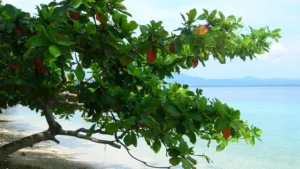
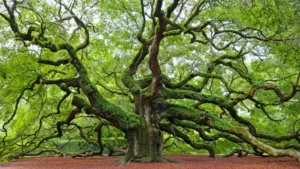


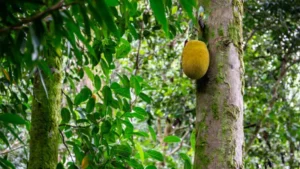
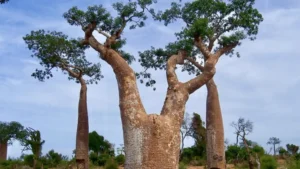
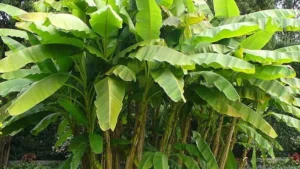
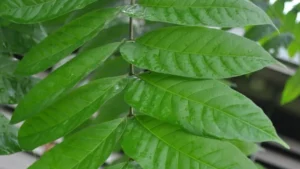
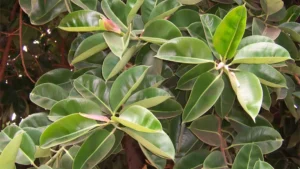
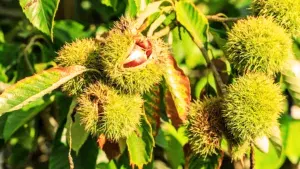

Leave your comment